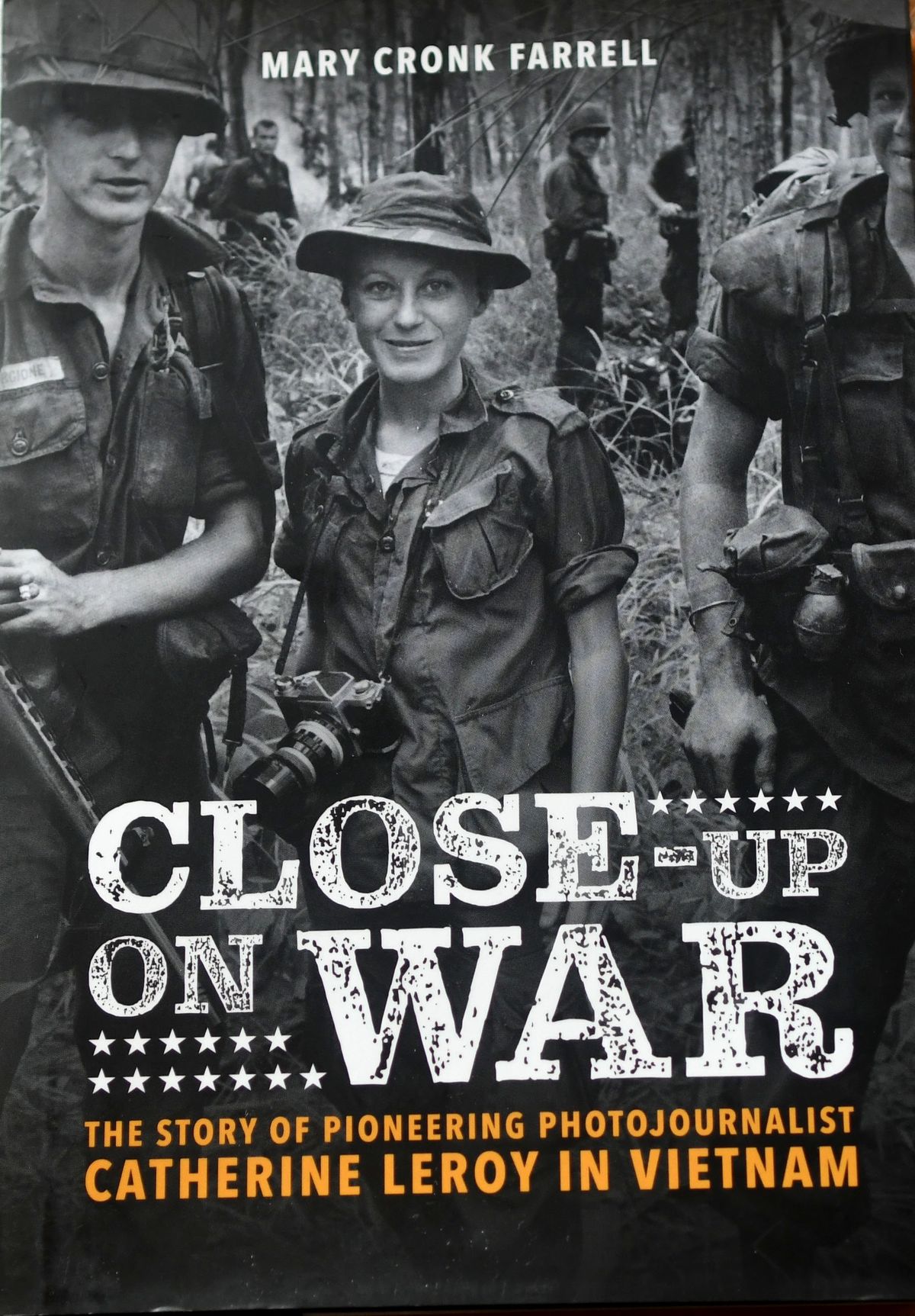Review: ‘Close-Up on War’ an important book about Vietnam War, photojournalism

Catherine Leroy wasn’t who you would expect to garner success in the Vietnam War. In 1966 at age 21, she bought a camera and shipped herself to war-torn Vietnam. Most in Saigon thought she’d join the other aspiring war journalists and be wounded or killed during combat and leave just as soon as she got there, or simply not be able to take the right shot. Leroy blew everyone away, risking life and limb, coming back with photographs that captured the faces of war.
Spokane author Mary Cronk Farrell (“Pure Grit,” “Fanny Never Flinched,” “Standing Up Against Hate”) writes of Leroy’s time in Vietnam in “Close-Up on War: The Story of Pioneering Photojournalist Catherine Leroy in Vietnam,” a nonfiction book written for students. Being about a photojournalist, it is packed with photos, mostly taken by Leroy. Farrell also uses the letters Leroy wrote home to her parents to give a glimpse of what might be considered normalcy amid her work (in one letter, she asks her mom to send Tampax).
Leroy was a trailblazer. She was the first press corps member (man or woman) to join the first paratrooping jump of the Vietnam War (with the 173rd Airborne Brigade). She and a fellow French photojournalist were captured by North Vietnamese soldiers in Hue and were the first to really be allowed to take pictures of them. After Vietnam, she was the first woman to receive the Robert Capa Gold Medal for her photojournalism in Lebanon during its civil war.
Leroy had many people supporting her when she got to Vietnam, especially when she started to make waves. Horst Faas, head of the Associated Press office in Saigon, agreed to pay $15 for every picture he used. Numerous other journalists, soldiers, Marines and high-up military men had her back and gave her leads – she was always itching to be in the place with the most action. Of course, there were always those who couldn’t stand Leroy’s breaking of the feminine mold, couldn’t handle her taking part in men’s work, couldn’t take her dirtying herself in a man’s war.
What made me really connect with Leroy was how Cronk Farrell described her stature. She was a petite blonde, not even reaching 100 pounds. She was tromping through jungles carrying half her body weight in cameras and supplies she needed to survive with these hulking soldiers she said were like brothers. She proved that you can do big things as a small person.
This book really is about war – about the toll it took on people, their homes, the environment and how Leroy recorded that. This book is very important to read right now with the war in Ukraine and especially with so many journalists being killed and injured there. It’s said in the book that no war had been as publicized without the military’s control as the Vietnam War, and that it probably wouldn’t happen again. Leroy shows us how important it is to see the faces struck by war.
Sylvie Manz is a sophomore at Lewis and Clark High School.